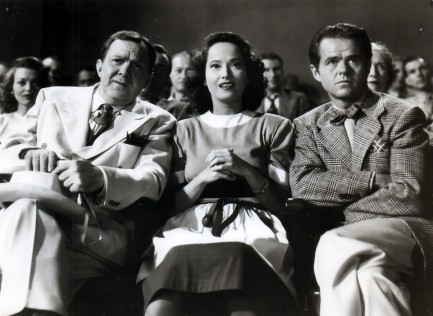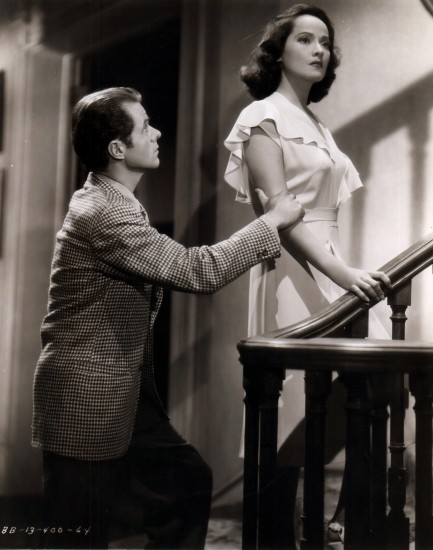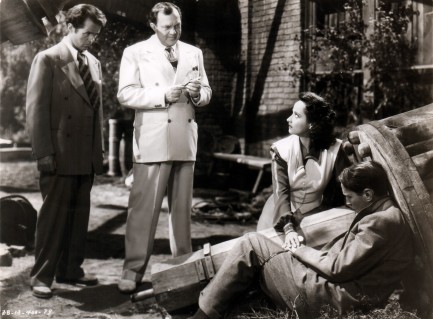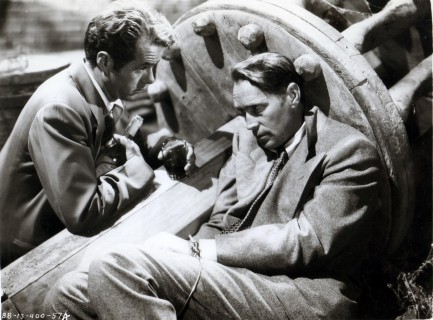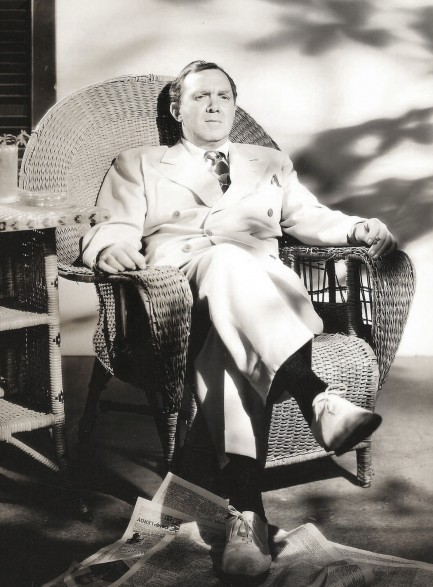 Everyone says she isn't real but could a figment of his imagination cause this many problems? 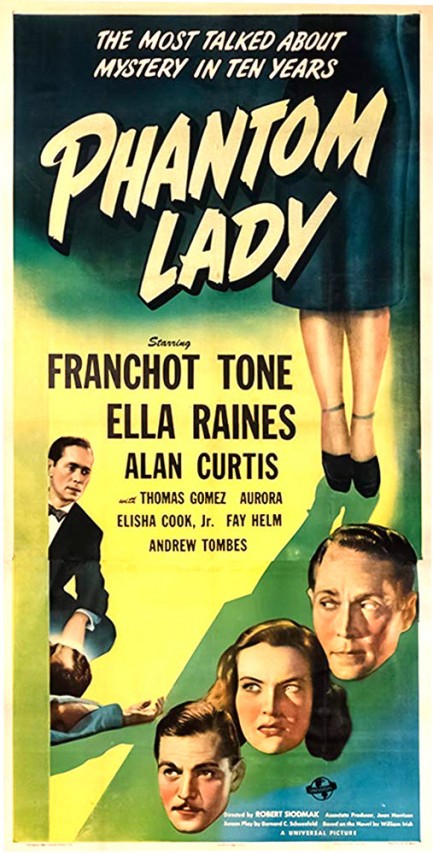
Secretaries make a habit of saving the boss's ass. It's in the job description. In Phantom Lady, which premiered in the U.S. today in 1944, the ass saving is literal, as Ella Raines finds herself the only person who believes her employer Alan Curtis didn't kill his wife. Curtis's alibi is as weak as they come—he spent the evening with a woman he never met before, whose name he never got, who he can only describe as wearing a strange hat, and who nobody can find to confirm his story. She's the phantom lady of the title—doesn't exist, at least as far as everyone besides Curtis is concerned. So after a quick trial, off to the death house he goes, where he sinks into a state of dismal acceptance of his own oblivion. That's when Raines decides to work her secretarial krav maga and crack the case. You think shorthand is hard? Try unraveling a vast conspiracy.
Phantom Lady also stars the great Franchot Tone, Elisha Cook, Jr., and one-ethnicity-fits-all character actor Thomas Gomez. As performers, the top end of the cast ranges from good to great, but the script isn't the best clay with which to mold. There are positives, though. The direction by Robert Siodmak is interesting, the set design is eye-catching in places, particularly in Tone's wacky bachelor pad with its odd concrete bed, and there's a great bit set in a jazz cellar that plays like something out of Reefer Madness without the drugs. It'll teach you that jazz music is crazy enough to bend reality all by itself. You'll also learn that in case of murder it's good to have someone in your corner. Preferably someone with a winning smile, a nice figure, and excellent investigative skills. 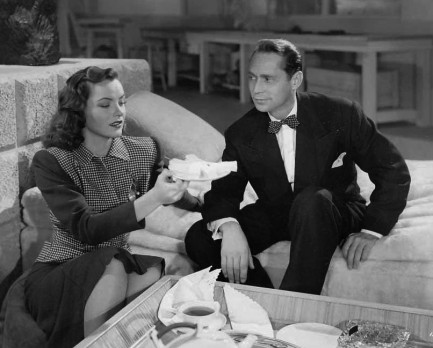 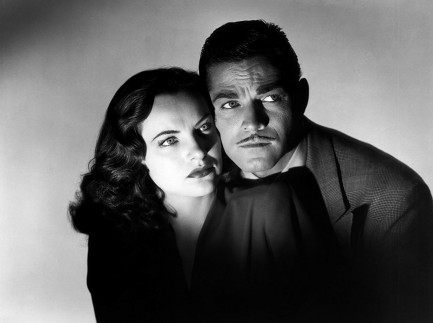 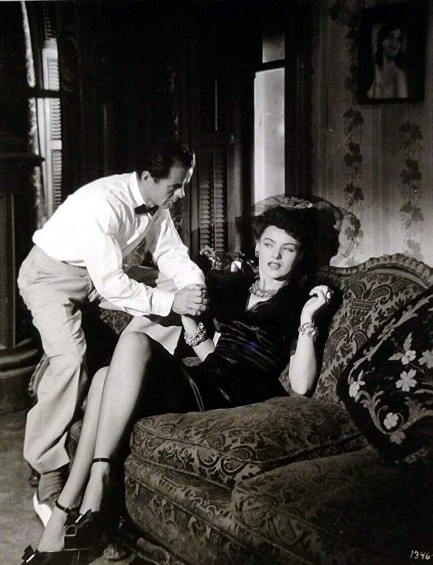 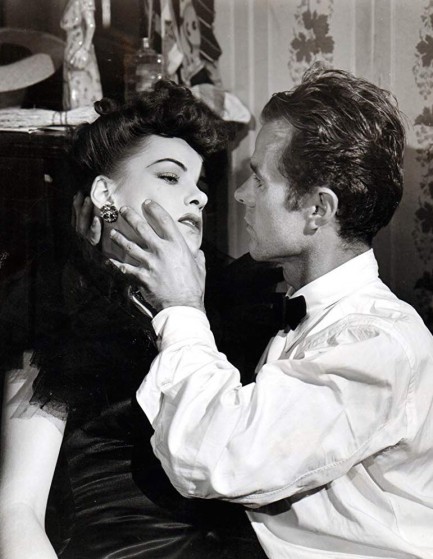 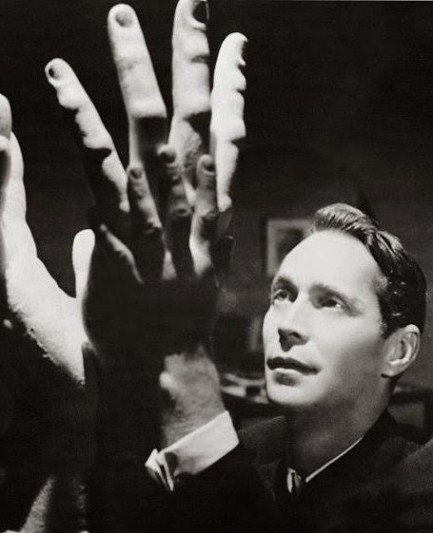 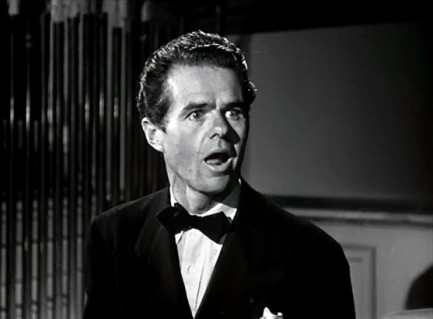 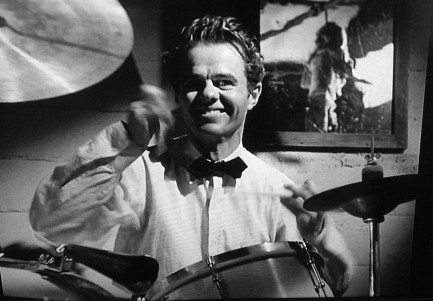 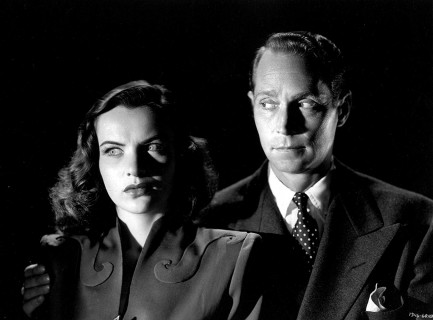 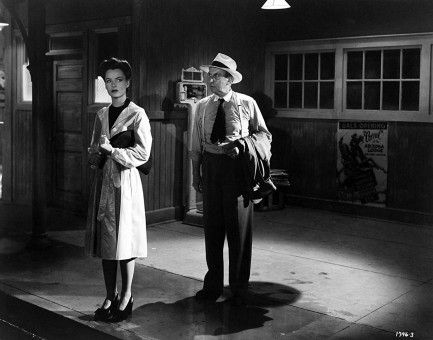 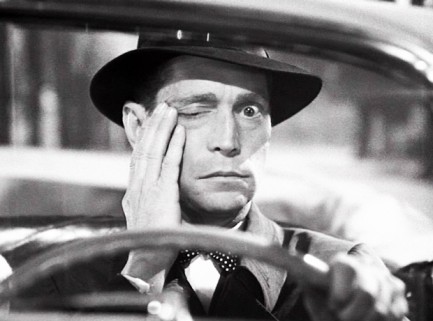 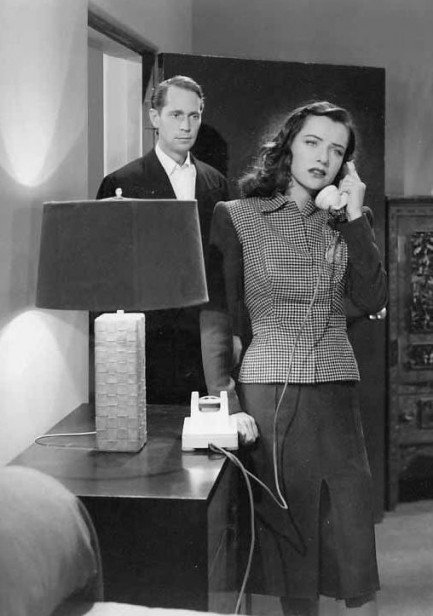 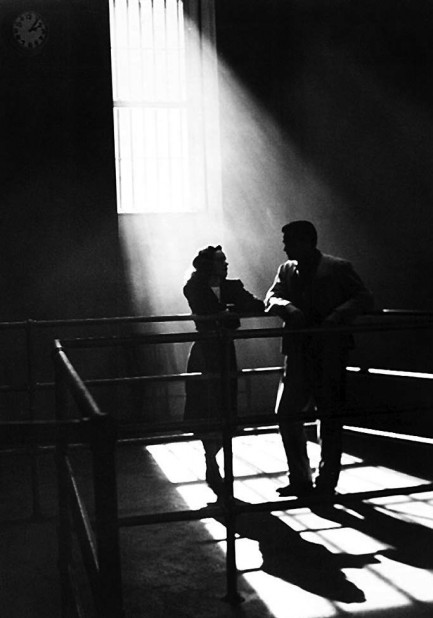
 B-movie actor generates A-list headlines for all the wrong reasons.
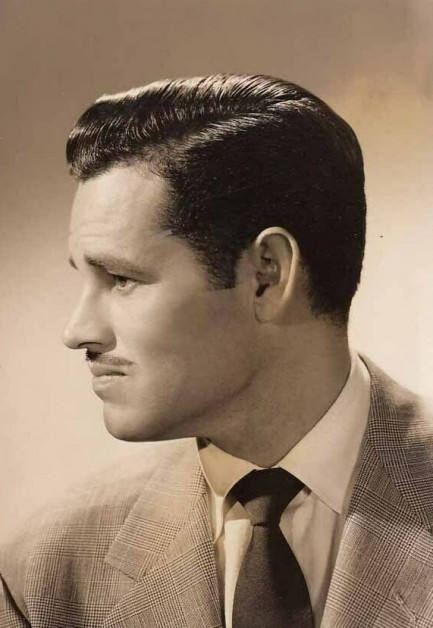 Show business careers go off the rails for a wide array of reasons—lack of talent, lack of audience appeal, substance abuse, and a predilection for general mayhem all come to mind. Hollywood actor Tom Neal fits legendarily into the last category. From his debut in 1938 through 1951 he logged more than seventy film appearances. That's incredible output by any measure. Most of his roles were in b-movies, but there were some notable parts mixed in. His career highlights included Another Thin Man, the film noir Detour, and Crime, Inc. Show business careers go off the rails for a wide array of reasons—lack of talent, lack of audience appeal, substance abuse, and a predilection for general mayhem all come to mind. Hollywood actor Tom Neal fits legendarily into the last category. From his debut in 1938 through 1951 he logged more than seventy film appearances. That's incredible output by any measure. Most of his roles were in b-movies, but there were some notable parts mixed in. His career highlights included Another Thin Man, the film noir Detour, and Crime, Inc.
Neal caused minor scandals early in his career, but he graduated to the majors beginning in early 1951, when he met tempestuous actress Barbara Payton and the two began dating. Payton had announced her engagement the previous year to debonair leading man Franchot Tone, but her ideas about commitment weren't of the standard variety. She was still married to an Air Force Captain named John Payton while dating Tone, and had allegedly slept with Gary Cooper and Steve Cochran while working with them on the 1950 western Dallas. When Neal met her, she kicked Tone to the curb and announced she and Neal would be marrying. But Payton was fickle, to say the least, and ended up dropping Neal and getting re-engaged to Tone. All this while still married to her Air Force guy.
One thing Hollywood people can count on is crossing paths with their colleagues at one point or another—especially if they're dating the same woman. When Neal crossed paths with Tone and Payton in September 1951 at her apartment, he intended to punish the man who had won Payton's hand. Everyone in Hollywood knew Neal had been an amateur boxer. Maybe the qualifier “amateur” gave Tone excessive confidence. Maybe he didn't know that Neal, who you see below with barbells overhead and a tube sock in his shorts, had accumulated a 31-3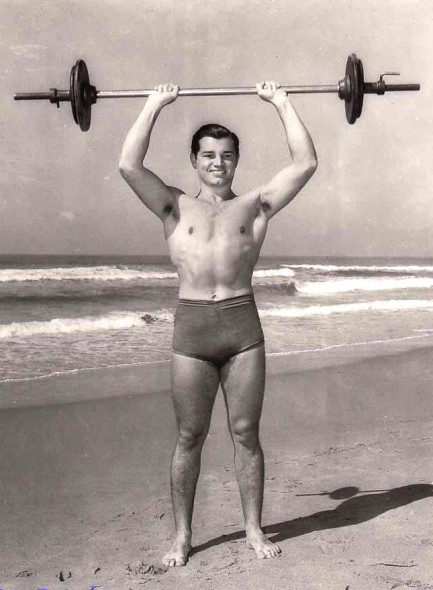 record in the ring. Maybe Tone slipped on a dollop of Beluga caviar. Payton said Tone simply had no choice about fighting because Neal attacked him. Whatever the reason, Neal floored Tone with his first punch, and continued to beat him afterward, delivering cheek and nose fractures. Tone lay in an eighteen hour coma in the hospital. Ironically, that was the day Payton's divorce had come through. record in the ring. Maybe Tone slipped on a dollop of Beluga caviar. Payton said Tone simply had no choice about fighting because Neal attacked him. Whatever the reason, Neal floored Tone with his first punch, and continued to beat him afterward, delivering cheek and nose fractures. Tone lay in an eighteen hour coma in the hospital. Ironically, that was the day Payton's divorce had come through.
1951 had been a pretty good year for Neal up to that point. But from then onward he was Hollywood persona non grata. He'd had more roles in ’51 than he would the entire rest of his career. We wouldn't go so far as saying that means Tone had the last laugh, since it would have been a extraordinarily painful laugh, considering the injuries and cosmetic surgery that followed. But okay, in that karmic way that's never fully satisfying, Tone at least must have felt a bit of Schadenfreude. Neal was blacklisted, and Payton was his. The good times didn't last. He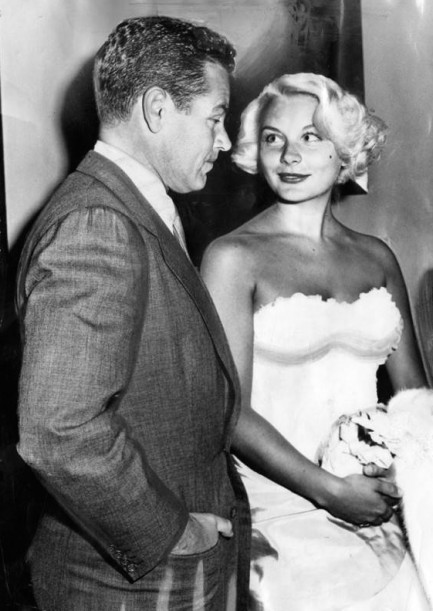 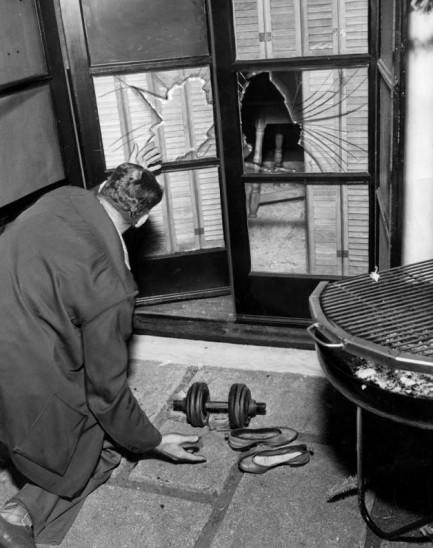 soon discovered that Payton—wait for it—had never stopped seeing Neal, including while Tone was in the hospital with a broken face. So there went that marriage. It seemed as if Neal had unequivocally won Payton's affections after all, and she does look happy in the 1952 photo above, but it's probably no surprise to learn that the two parted ways after a few tumultuous years, some broken windows, and at least one police intervention. Payton went on to have truly epic problems that would put a South American novela to shame. soon discovered that Payton—wait for it—had never stopped seeing Neal, including while Tone was in the hospital with a broken face. So there went that marriage. It seemed as if Neal had unequivocally won Payton's affections after all, and she does look happy in the 1952 photo above, but it's probably no surprise to learn that the two parted ways after a few tumultuous years, some broken windows, and at least one police intervention. Payton went on to have truly epic problems that would put a South American novela to shame.
Neal nursed his severely damaged career along, landing only occasional minor parts, and by the time the ’60s rolled around couldn't beg, barter, or buy a role. He had been married for a few years during the late ’50s, and in 1960 he married again, to a receptionist named Gale (sometimes Gail) Bennett, who you see below. In April 1965 police were summoned to Neal's home in Palm Springs where they found Bennett dead. She had been shot through the back of the head with .45 calibre pistol, the 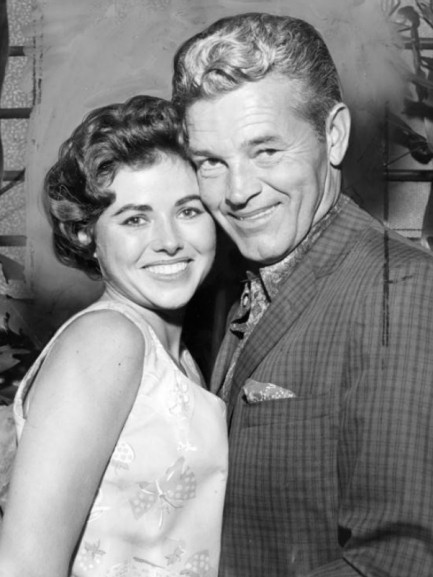 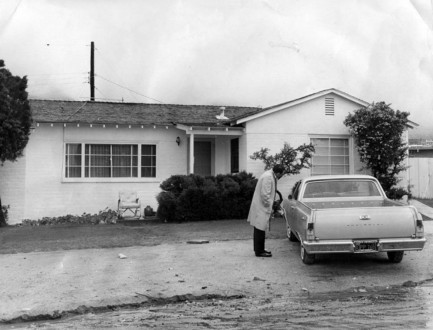 slug entering her skull behind her right ear and ending up in a sofa cushion. Neal wasn't on the premises when police arrived, but was soon arrested, and claimed the shooting had been an accident, the result of a struggle over the gun after his wife pulled it on him. slug entering her skull behind her right ear and ending up in a sofa cushion. Neal wasn't on the premises when police arrived, but was soon arrested, and claimed the shooting had been an accident, the result of a struggle over the gun after his wife pulled it on him.
Accounts of the killing vary, as they always do. In some, Neal shot Bennett as she was taking a nap. In others, they argued. We even found one that said Neal claimed the accident occurred while he and Bennett were making love. At trial Neal's defense attorney claimed a mystery man had pulled the trigger. We were struck, however, when we found that Bennett had secretly filed for divorce, and in the filing specifically mentioned Neal threatening her with a .45 automatic. If that detail struck us, it certainly must have made an impact on the jury. In the end, after a sensational trial, the dozen jurors convicted Neal of involuntary manslaughter.
Neal spent only six years behind bars before being paroled. That's a pretty sweet deal for what many suspected was a clearcut case of premeditated murder. Also, note that during the dust-up with Tone, one witness said Neal threw more than thirty punches after Tone was down. That could be construed as attempted murder, were you inclined to put a label on it, and if that was the plan it almost worked. Doctors thought for a while Tone would never awaken. Neal was a rough and tumble fellow, there's little doubt. But looks and a bit of charm will carry you a long way in life. Eventually, though, even those can run dry. Neal died eight months after his release from prison, aged fifty-eight, of heart failure, looking a shell of his former self.
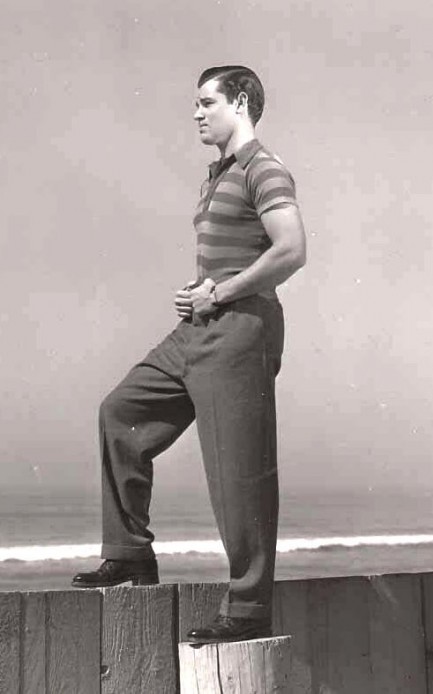 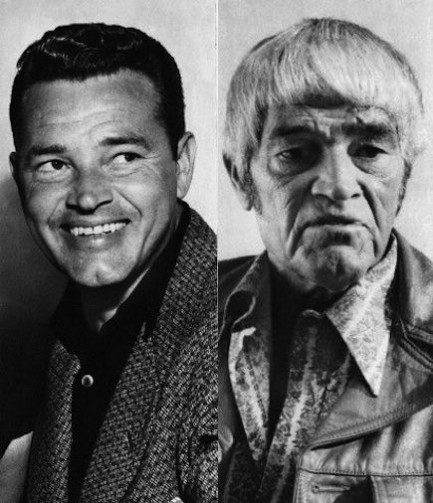
 As far as they're concerned no crime means no fun. 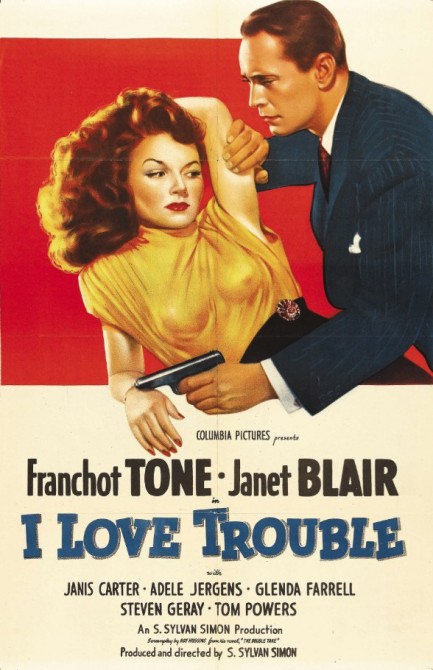
The 1994 romantic action movie I Love Trouble is unrelated to the original from 1948, for which you see a beautiful promo poster above. The first I Love Trouble is a film noir, a neglected one not often mentioned as an entry in the genre. Franchot Tone stars as a detective hired by a politician to look into his wife's background. He's been getting anonymous notes implicating her in some sort of illegality. As Tone chases clues from L.A. to Portland, his investigation uncovers blackmail and hidden identities, and of course a love interest pops up in the form of the wife's sister. With its smug private dick and regular interjections of humor the movie feels derivative of The Maltese Falcon, and its romance angle is incongruous, but Tone is cool in his detective role and carries the weight of the narrative nicely. The cast is a who's-who of stars and soon-to-be stars, including Adele Jergens, John Ireland, Tom Powers, and Raymond Burr. If that doesn't pique your interest you just don't love trouble. I Love Trouble premiered today in 1948 and went into to wide release January 15. 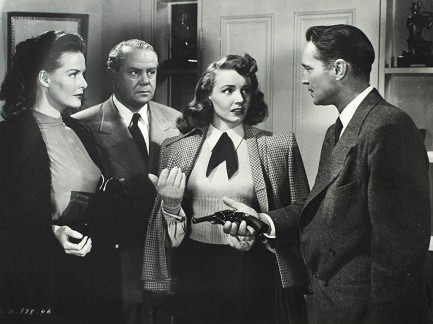 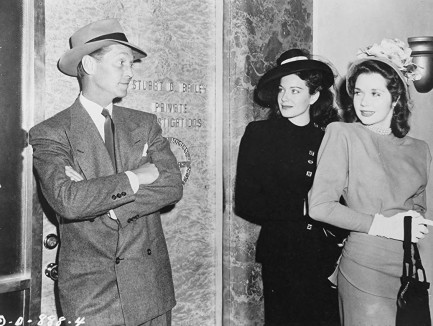 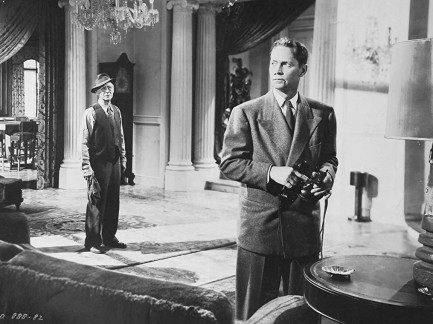 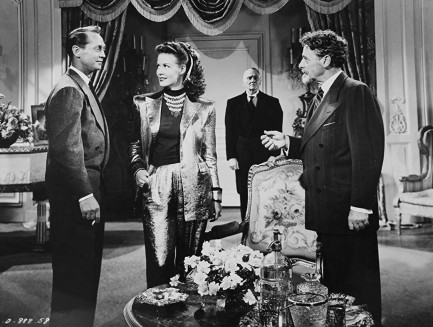 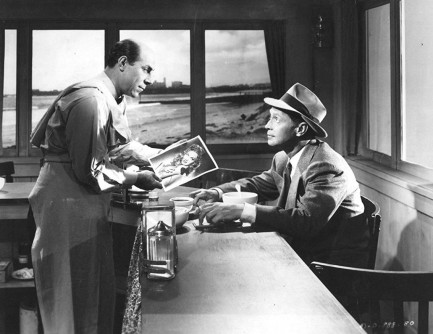 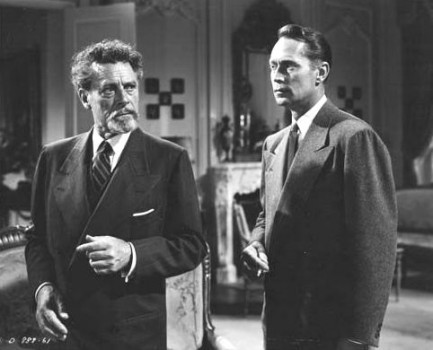 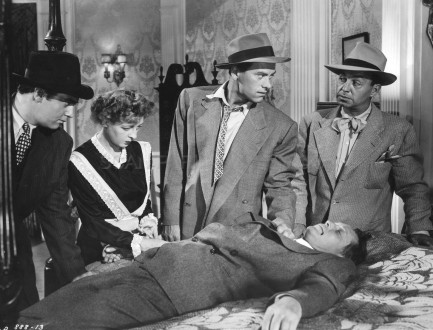 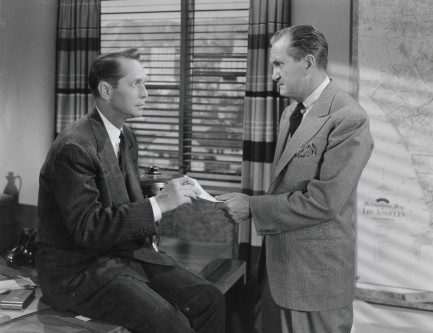 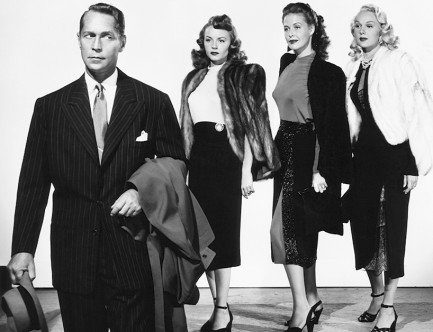
 New tabloid serves up Russell, Monroe, and others. 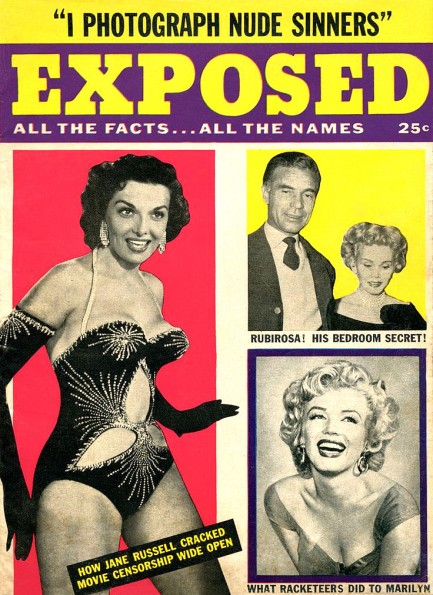
Jane Russell, wedged into an outfit that turns her boobs into footballs, graces the cover of the debut issue of Exposed, a high budget tabloid launched by Fawcett Publications in 1955. It arrived on a crowded newsstand already occupied by Confidential—then arguably the most circulated magazine in the U.S.—as well as Whisper, Hush-Hush, Uncensored, and similar publications. The get-up Russell is wearing is a costume from her starring role in 1954's The French Line, and we sort of assumed the shot had been at least slightly doctored,  and we seem to be correct. Judge for yourself at right. At least her boob punishment was offset by the fact that her outfit was too flimsy to include one of the deadly corsets that sometimes made their way around stars' waists. and we seem to be correct. Judge for yourself at right. At least her boob punishment was offset by the fact that her outfit was too flimsy to include one of the deadly corsets that sometimes made their way around stars' waists. Russell is in Exposed to illustrate a story about sex in cinema, but she isn't the most exposed occupant of the magazine. That would be Marilyn Monroe, whose famous Playboy nude is reprinted for a story about hustlers reprinting her photos. We'll just assume Exposed licensed their Monroe shot. Apparently, though, those other miscreants were selling her likeness by the thousands without permission and without compensating Monroe. Exposed shows her in court testifying for prosecutors. The prosecution may have won its case in 1955, but in the here and now Monroe is sold from Tegucigalpa to Manila, unlicensed all of it. Which just goes to show the more things change the more they stay the same. Probably the highlight of the issue is a long story about detectives who make their living catching cheating couples in action. Exposed offers up numerous photos of these pairs caught in the act in motel rooms and secluded homes. Are these photos real? Well, we have our doubts. Even the most cleverly posed action shots have those intangibles that mark them as fakes, but that's just our opinion. Judge for yourself. Elsewhere in Exposed you get “Sophie” Loren, Errol Flynn, Marguerite Chapman, Franchot Tone, and other big time celebs. We're pretty proud of this acquisition. It wasn't terribly expensive, but we've seen it priced much higher than what we paid. Maybe down the line we'll flip ours for a tidy profit. But that's what we always say. Much to the Pulp Intl. girlfriends' chagrin, our office just piles higher and higher with mid-century ephemera and we haven't sold a single piece yet. Exposed goes to the top of the precariously tottering pyramid. We have about thirty-five scans below, and plenty more tabloids on the way.
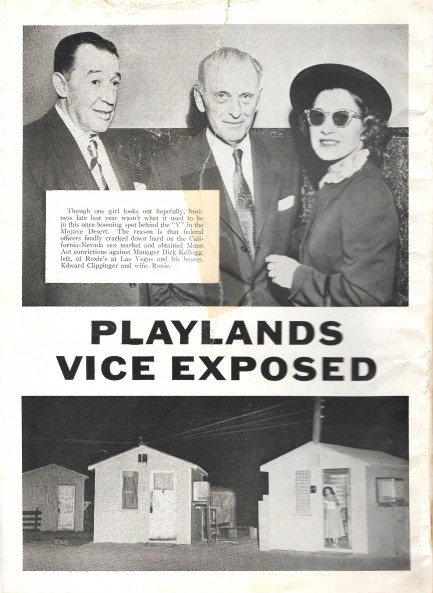 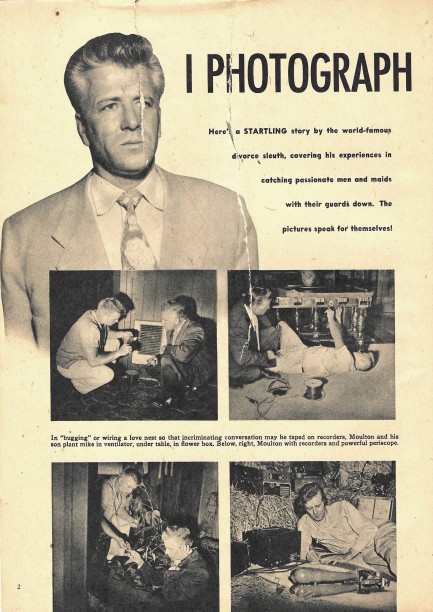 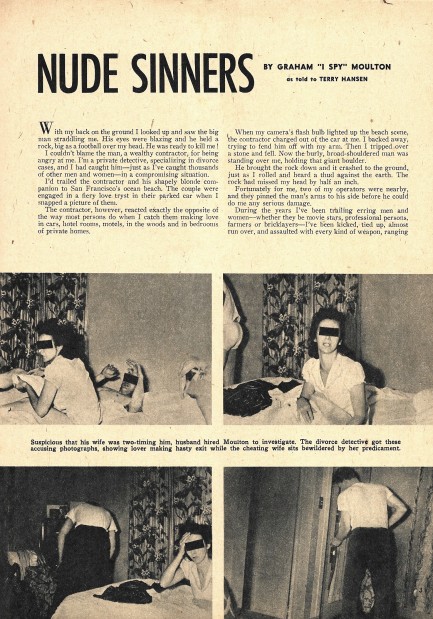 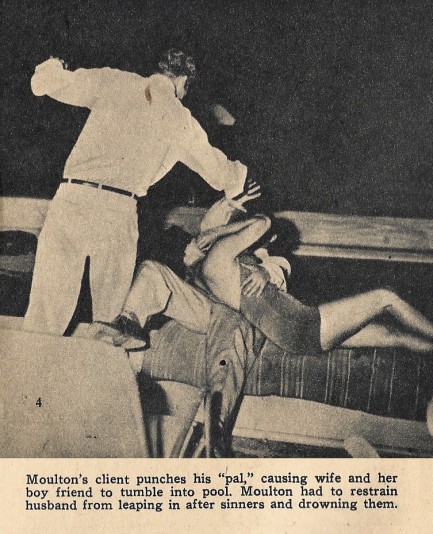 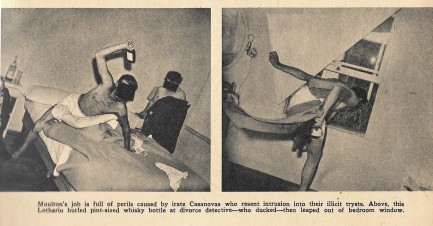 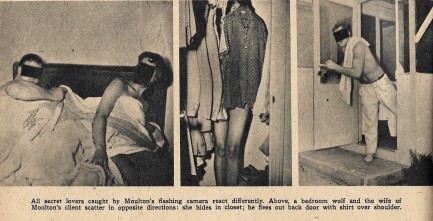 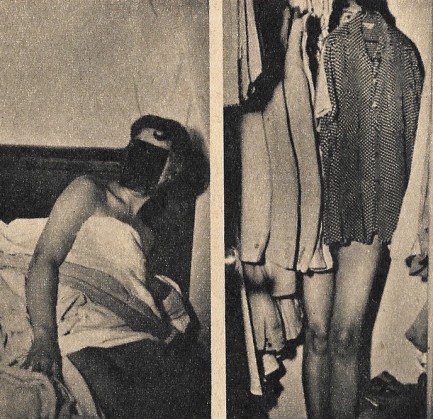 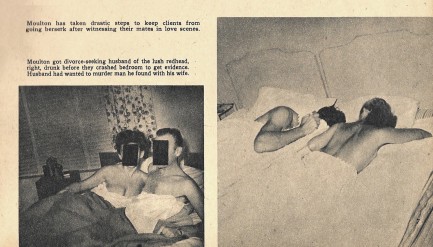 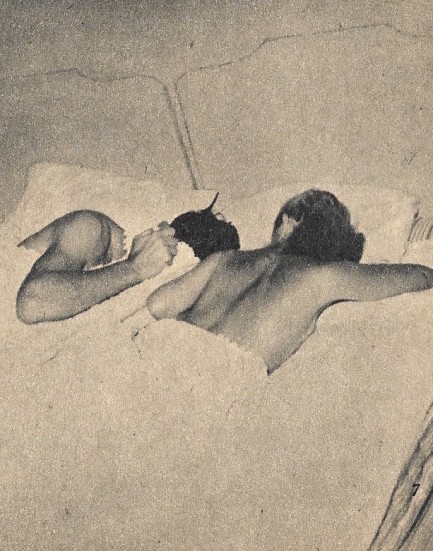 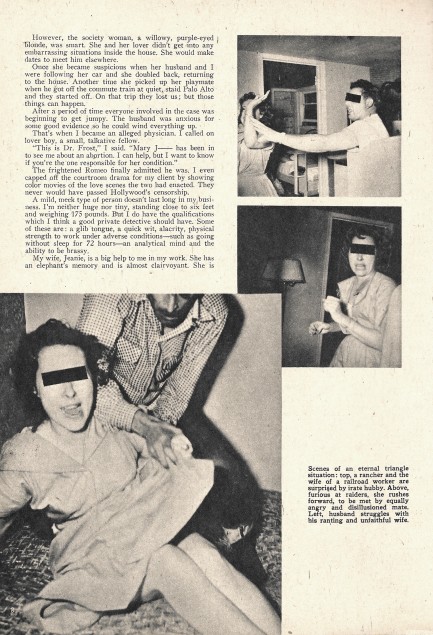 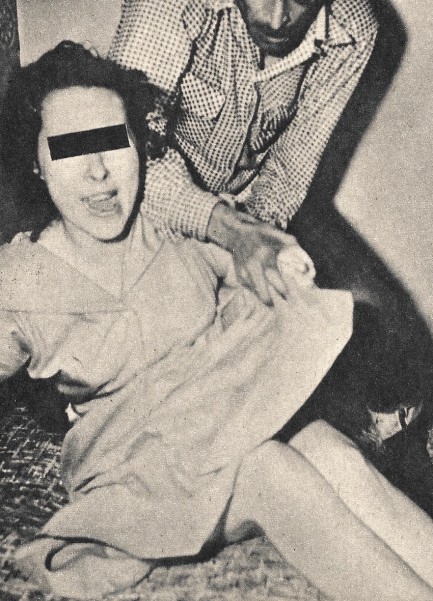 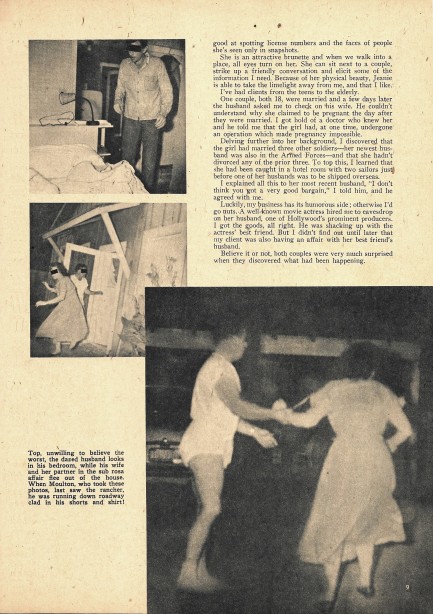 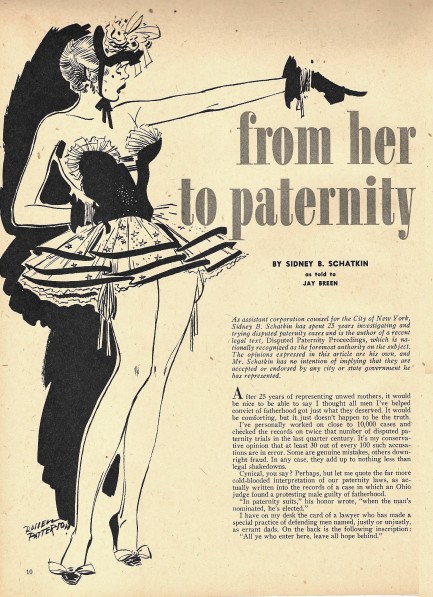 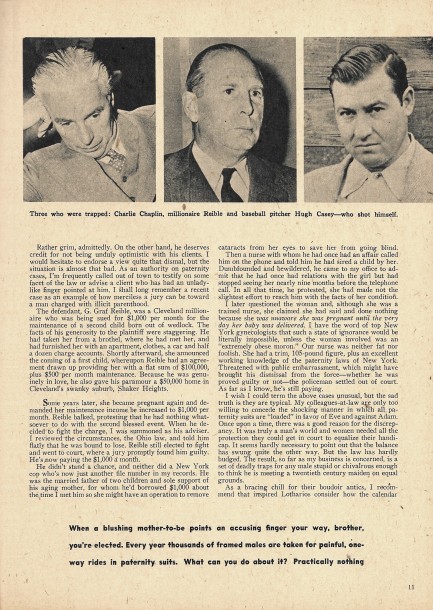 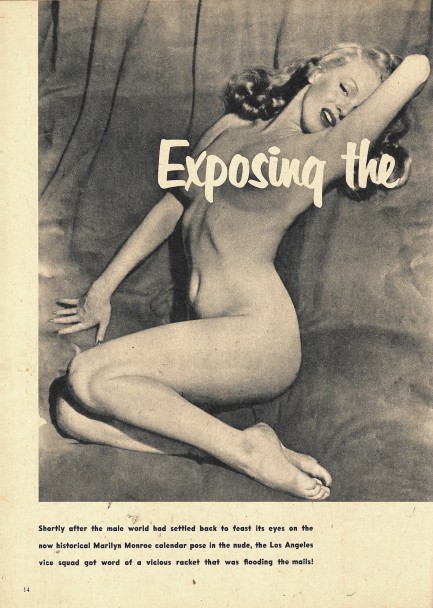 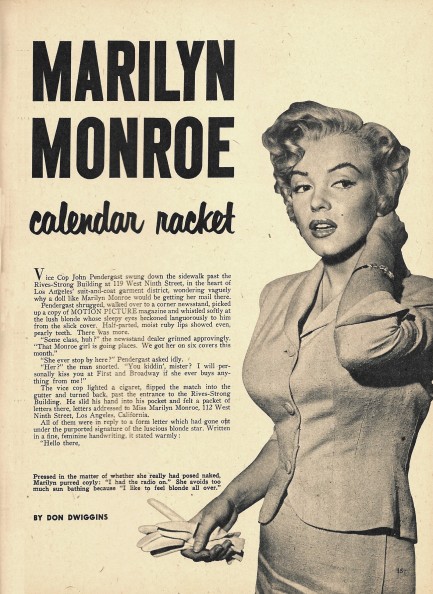 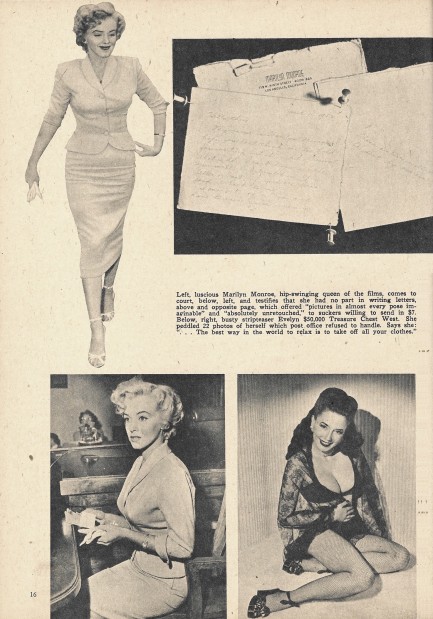 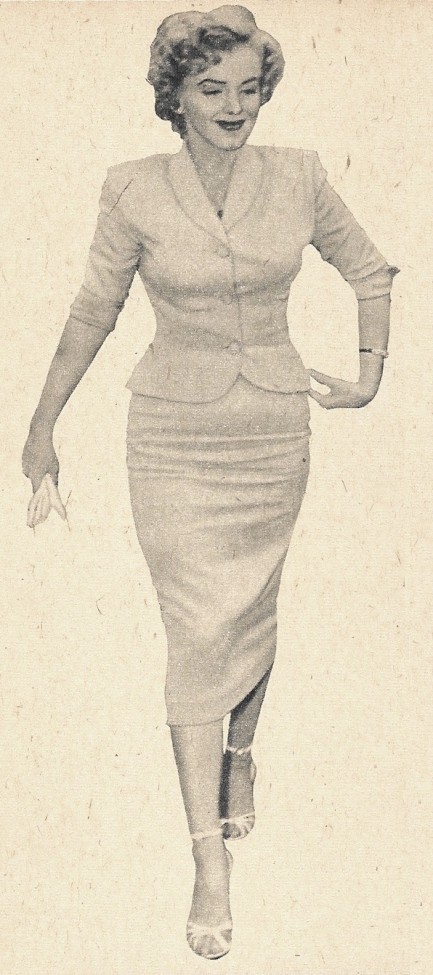 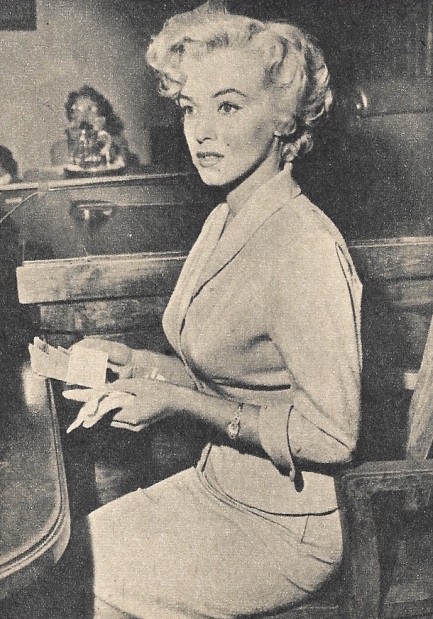 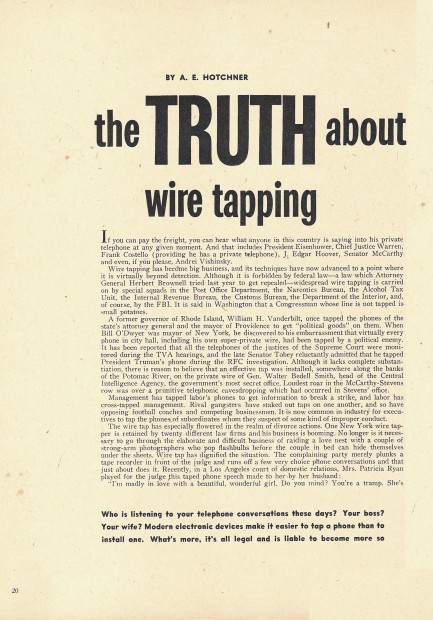 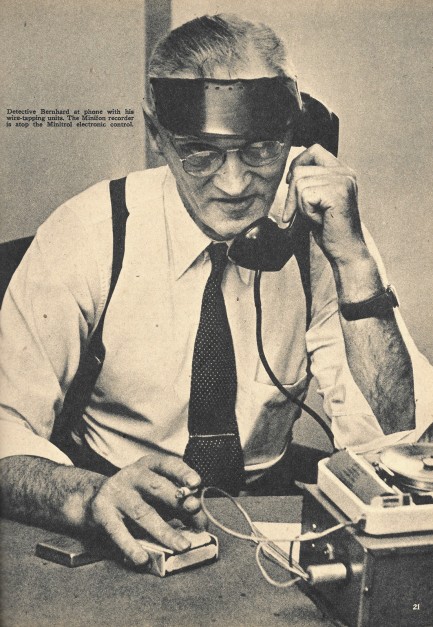 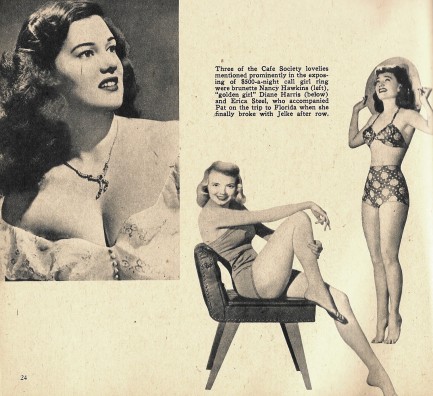 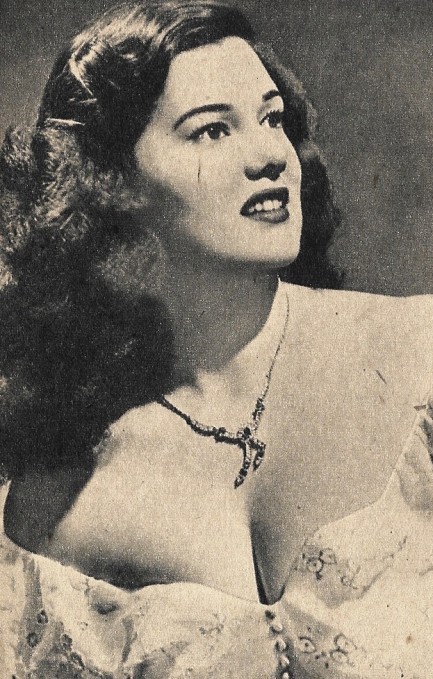 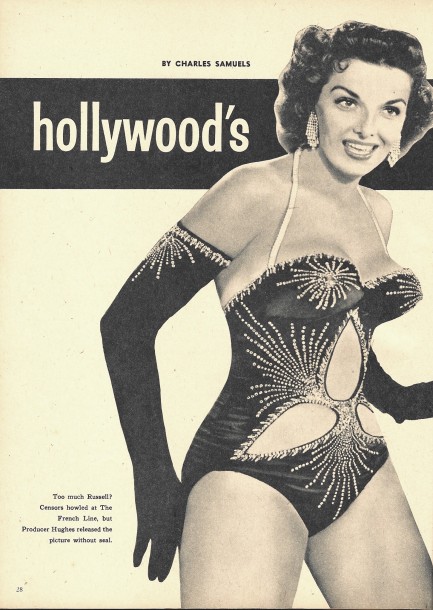 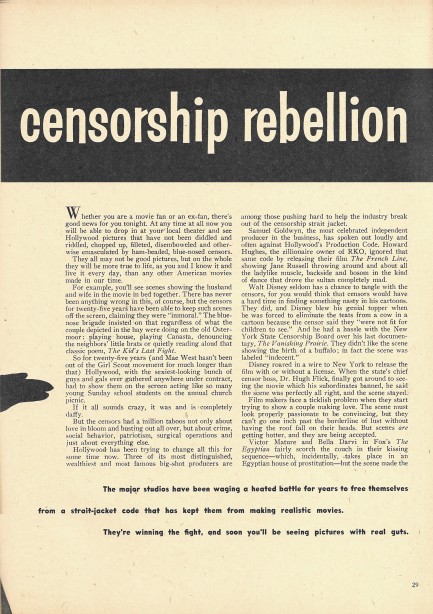 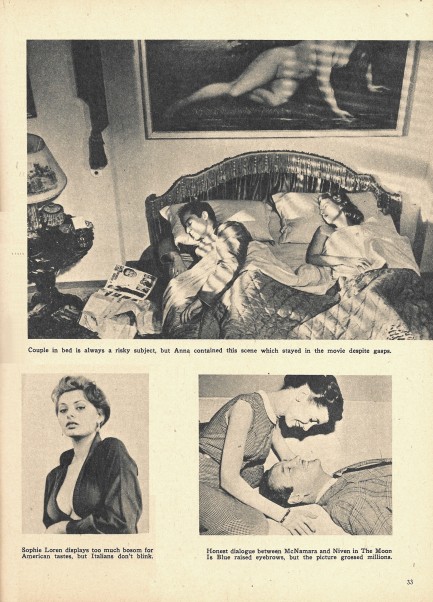 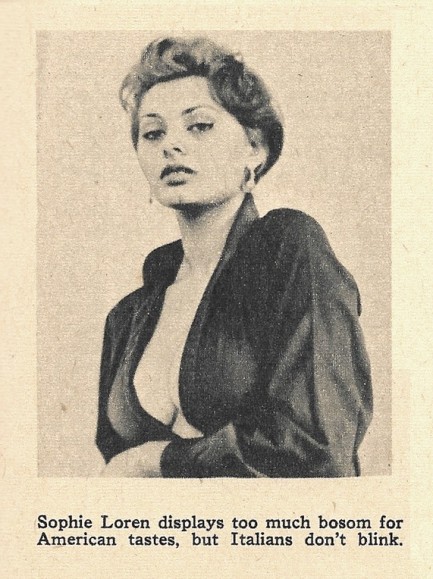 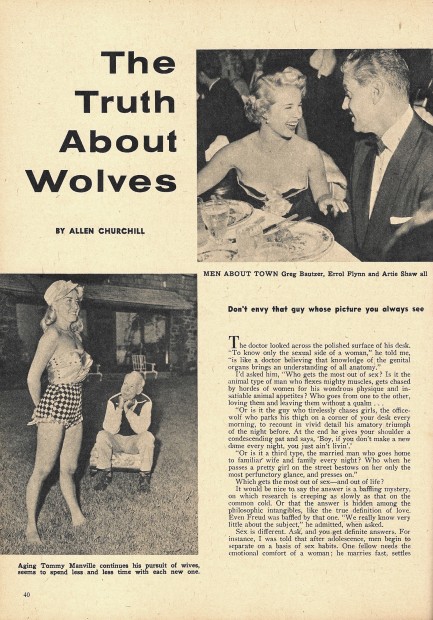 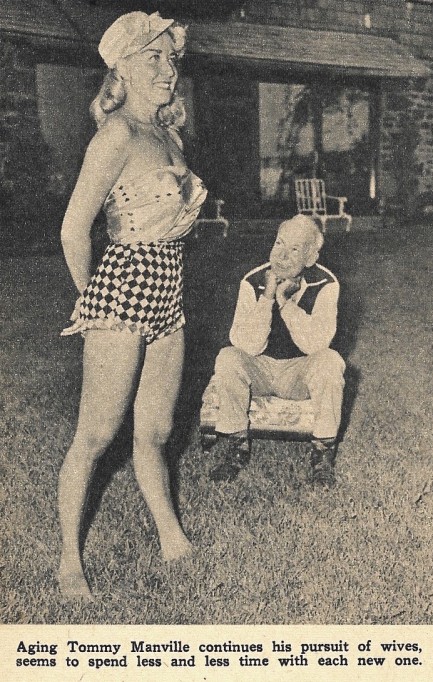 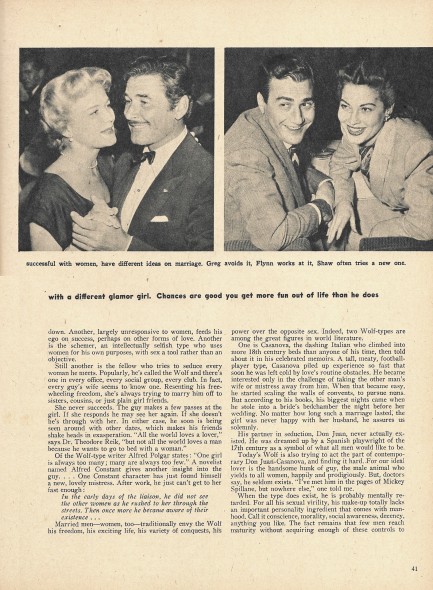 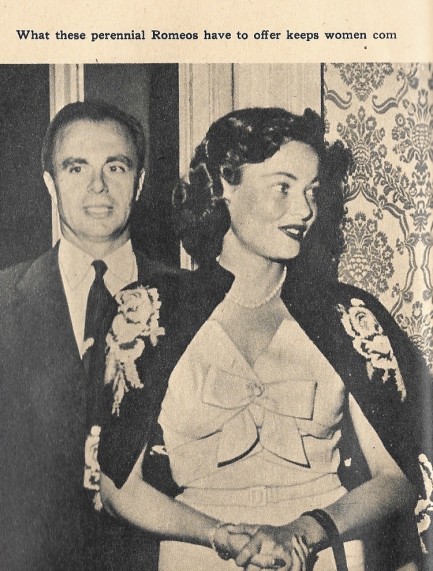 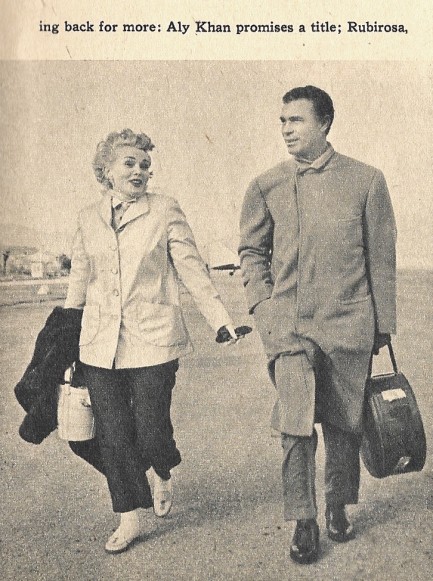 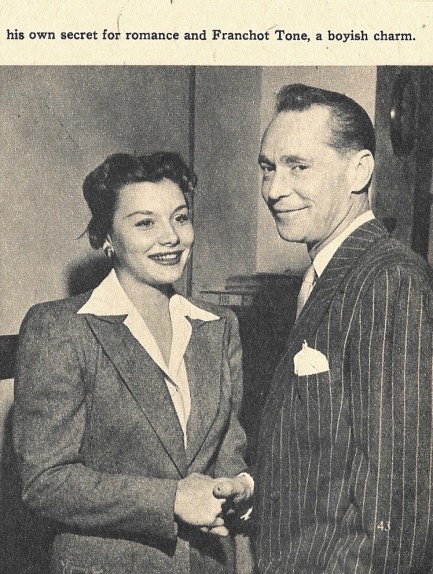 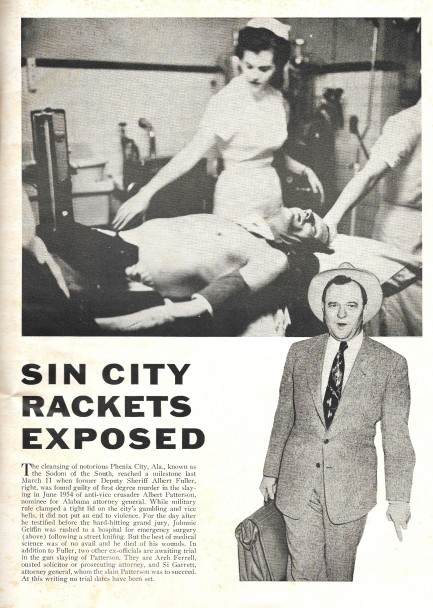
 Did she or didn’t she? 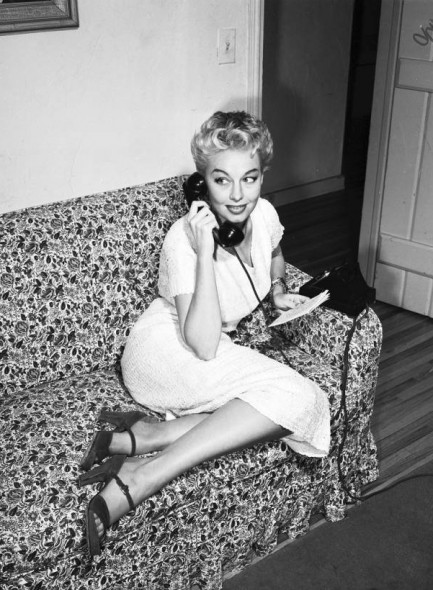 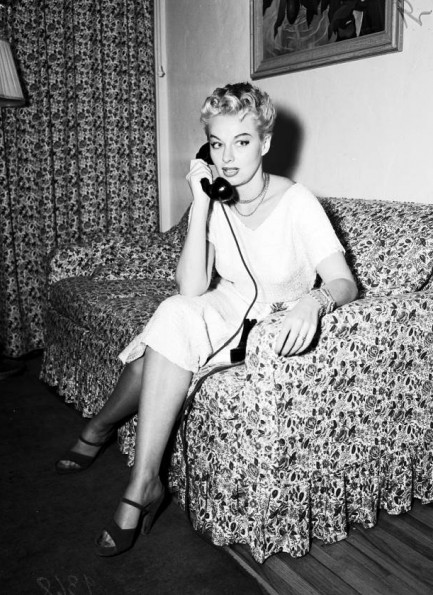
These two photos showing burlesque dancer Lili St. Cyr were shot today in 1951 for a Los Angeles Examiner story about St. Cyr’s legal difficulties. On 23 February of that year she had begun performing at Ciro’s supper club in Hollywood. It was a different type of club for her—it lacked the intimacy of her normal venues, and would sap some of the heat from her act, but the place was world famous and considered by the smart set to be classy. It had hosted Edith Piaf, Marlene Dietrich, Duke Ellington, and Dinah Washington. Of late it was facing stiff competition from Macambo’s, a Brazilian themed joint across the street, and owner Herman Hover wanted to make a splash with St. Cyr. He spent thousands refurbishing the stage just for her, and she would be the first burlesque dancer to transition from men’s clubs to L.A.’s most famous supper club. On premiere night celebs such as Ronald Reagan, Nancy Davis, Franchot Tone, Barbara Payton, Lex Barker, Mickey Rooney, and Los Angeles mayor Fletcher Bowron watched her strip down to toned perfection as they ate dinner and sipped drinks. Other celebs that visited that summer included Bette Davis, Humphrey Bogart, and Clark Gable. During St. Cyr’s residency she varied her act, but a standard bit was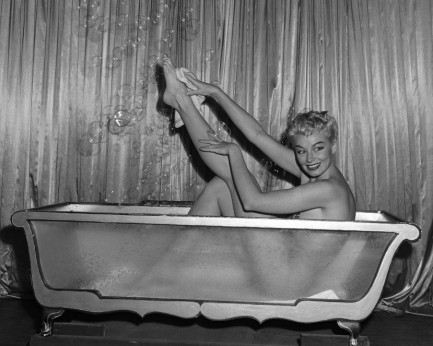 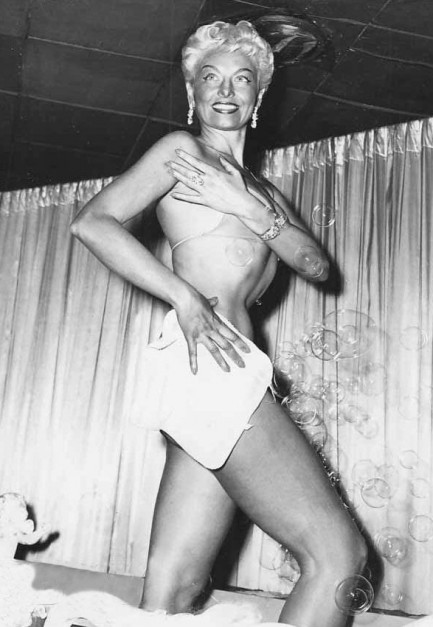 entitled "An Interlude Before Evening," and involved being helped from her clothing by her maid Sadie before slipping nude into a bathtub. But the nudity was an illusion, the cleverest part of her act, achieved through a combination of lighting, positioning, flesh-colored underwear, and sheer athleticism as she slipped quickly from behind a towel and into the sudsy tub. entitled "An Interlude Before Evening," and involved being helped from her clothing by her maid Sadie before slipping nude into a bathtub. But the nudity was an illusion, the cleverest part of her act, achieved through a combination of lighting, positioning, flesh-colored underwear, and sheer athleticism as she slipped quickly from behind a towel and into the sudsy tub. On 18 October a group of Los Angeles sheriff’s deputies, who were trying to enforce a countywide ban against stripping, arrested St. Cyr and Herman Hover. The charges were the usual slate. St. Cyr called upon celebrity lawyer Jerry Giesler—an event the two Examiner photos at top are supposed to be illustrating—and Giesler proceeded to help turn what was already a media boon for St. Cyr into a full bonanza. Giesler was a showman, and he loved cases that had the potential to increase his fame. He made assorted sensational statements to the press, including one in which he promised to have his client perform her bath routine in the courtroom, and another in which he opined that putting together a jury of peers required empaneling a dozen strippers. He described St. Cyr as merely trying to improve her station in life, just an industrious woman trying to carve herself a piece of American pie. The press ate it up. 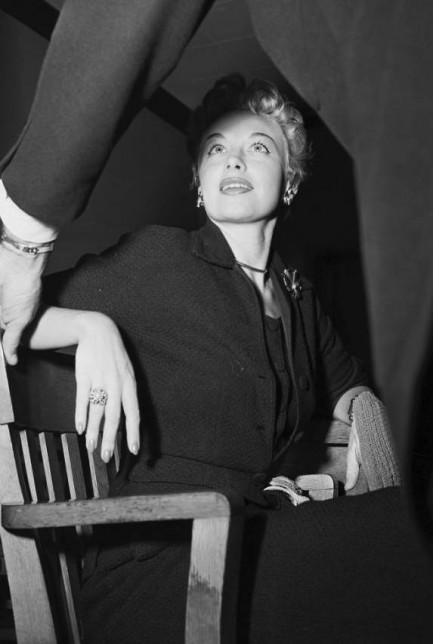 The trial was scheduled for early December in the Beverly Hills Courthouse. Giesler kept the jury—which wasn’t all strippers, but at least was mostly female—laughing with his continual antics. He introduced St. Cyr’s rhinestone encrusted bra and g-string as people’s exhibits A and B. He drew diagrams on a blackboard illustrating how different observers' vantage points toward the stage were blocked by St. Cyr's maid. He flustered police officials by making them discuss in detail such such terms as “bump,” “grind,” and “half-bump,” and followed that up by putting Herman Hover on the witness stand and having him demonstrate those moves. The sight of the portly Hover attempting burlesque sent ripples of laughter through the courtroom. Years later Giesler wrote: “I can honestly say I succeeded in having her case laughed into a not-guilty verdict.” The trial was scheduled for early December in the Beverly Hills Courthouse. Giesler kept the jury—which wasn’t all strippers, but at least was mostly female—laughing with his continual antics. He introduced St. Cyr’s rhinestone encrusted bra and g-string as people’s exhibits A and B. He drew diagrams on a blackboard illustrating how different observers' vantage points toward the stage were blocked by St. Cyr's maid. He flustered police officials by making them discuss in detail such such terms as “bump,” “grind,” and “half-bump,” and followed that up by putting Herman Hover on the witness stand and having him demonstrate those moves. The sight of the portly Hover attempting burlesque sent ripples of laughter through the courtroom. Years later Giesler wrote: “I can honestly say I succeeded in having her case laughed into a not-guilty verdict.” That may have been true, but St Cyr’s icy demeanor was also an important factor. The women found her elegant and remote—the opposite of what they had expected. And the cops did their part for St. Cyr's defense by being terrible witnesses. One claimed that she emerged from the tub completely nude (the normal conclusion to her Interlude, and just as illusory). Another said she wore undies but that he could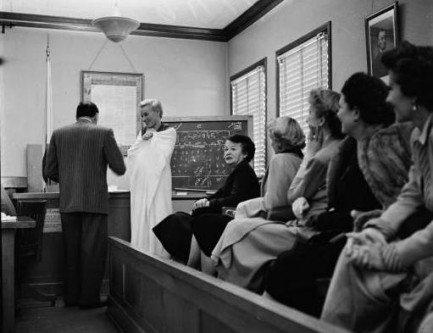 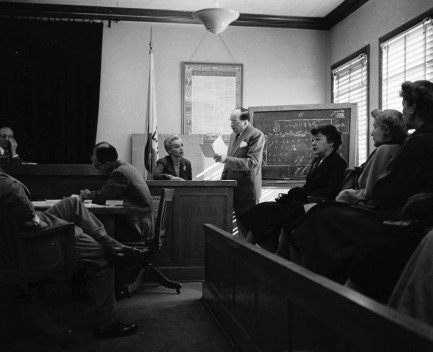 see the outline of her “private parts,” which he discerned in enough detail to determine “were shaven.” The inconsistencies were epic. Some said she caressed herself, others weren’t sure. Another described her towel as “about twenty, twenty-four inches.” In reality it was three times that size. It was as if St. Cyr's dance had dumbfounded the cops. see the outline of her “private parts,” which he discerned in enough detail to determine “were shaven.” The inconsistencies were epic. Some said she caressed herself, others weren’t sure. Another described her towel as “about twenty, twenty-four inches.” In reality it was three times that size. It was as if St. Cyr's dance had dumbfounded the cops. The confusion has extended even to the present day. For a performance that lasted barely fifteen minutes, it has had an amazing amount of conflicting information attached to it. Columnist Army Archerd claimed St. Cyr was indeed nude that night (clearly wrong, according to multiple testimonies); Sheila Weller’s book Dancing at Ciro’s claims an “all-male” jury (it was mostly female) was taken to Ciro’s to see the act (Giesler tried, but the judge said no); some sources claim St. Cyr performed a reverse strip, beginning nude in the tub and emerging to be slowly dressed by her maid (indeed, that was an oft-performed variation, so it is certainly possible it happened that night). Who's right, and who's wrong? Short of using a time machine to return to October 1951 there's no way to tell. At the end of the six-day trial the jury acquitted St. Cyr following a mere seventy-eight minutes of deliberations. There had been no indecent exposure. At least not that night. All St. Cyr’s biographers agree on this much—she was shy and regal offstage, but her performances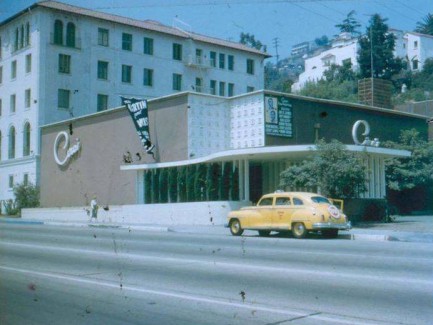 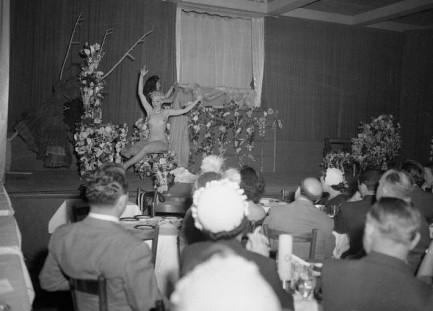 freed her to inhabit different characters. Despite her assertions that she always wore at least a g-string and bra, she definitely performed topless on occasion, as shown by the above photo taken at Ciro’s during early 1951. freed her to inhabit different characters. Despite her assertions that she always wore at least a g-string and bra, she definitely performed topless on occasion, as shown by the above photo taken at Ciro’s during early 1951. Sheriff’s deputies had gone to the club already intent upon arresting her based on what they had heard about the act, which may have influenced their testimony—i.e., they didn’t see her nude, but knew she had done it before. St. Cyr admitted in court she knew police were in the audience, thus she was especially careful that night. But what of other nights? Maybe Army Archerd did what columnists do—took an event he witnessed on one night and pretended it happened on a more useful one. Maybe St. Cyr, on occasions when she knew the cops were far away, flashed her audience to generate buzz. It’s likely we’ll never know what really happened, but that merely adds to the St. Cyr mystique. Did she or didn’t she? Only her maid knew for sure.
 No matter how far she ran dissatisfaction followed close behind. 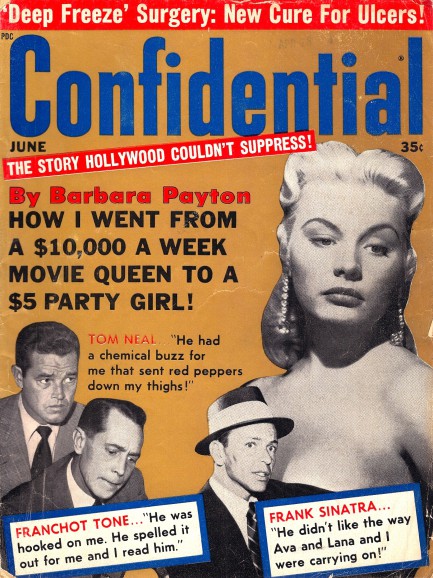
This gold colored June 1963 cover for Confidential magazine is entirely given over to actress Barbara Payton, whose self-penned hard-luck story appears inside and details her life troubles. The tale is well known and is one we’ve touched upon before—early marriage and early motherhood, followed by stardom, romances, and riches, followed by booze, drugs, divorces and crime. Confidential being Confidential, the editors neglect to mention that the story here is not an exclusive, but rather is excerpted from I Am Not Ashamed, Payton’s painfully revealing autobiography. I Am Not Ashamed did not sell especially well, and was pretty much forgotten a few years after its release. But it reappeared by chance two decades later when Jack Nicholson famously lent a rare copy to Jessica Lange to help her prepare for her femme fatale role in The Postman Always Rings Twice. Today the book is widely available. Just a few seconds reading Payton’s words conjures the suspicion she had a ghostwriter, and indeed, it was the king of lowbrow literature Leo Guild who gave shape to the prose, which reads like gutter level sleaze fiction. For example: “He hated what I had been [but] loved me for what I was. He tortured himself. Every part of my body reminded him of another man.” And this bit: “I had a body when I was a young kid that raised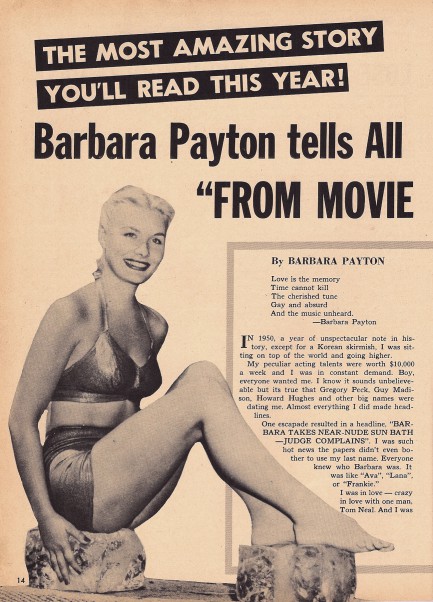 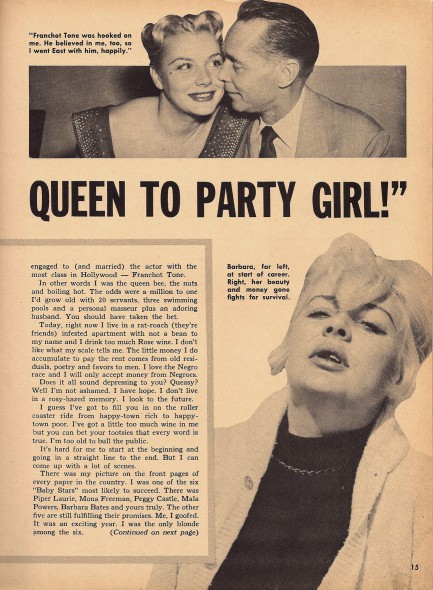 temperatures wherever I went. Today I have three long knife wounds on my solid frame. One extends from my buttocks down my thigh and needed I don’t remember how many stitches.” Payton’s anecdotes are cringe worthy, but they read like she’d gotten a grip on her life. No such luck. After four more long years of drugs, drink, and disaster she was found dead on her bathroom floor in 1967. temperatures wherever I went. Today I have three long knife wounds on my solid frame. One extends from my buttocks down my thigh and needed I don’t remember how many stitches.” Payton’s anecdotes are cringe worthy, but they read like she’d gotten a grip on her life. No such luck. After four more long years of drugs, drink, and disaster she was found dead on her bathroom floor in 1967. Payton post-mortems usually describe her problems as self-induced, but that’s simplistic. In the 1950s famous men did anything they wished, but women had to be careful not to be seen doing the same. Still do today. That’s the part Payton had problems with. Even so, she had several happy periods during her life. One of those was the stretch she spent in Mexico married to a young fisherman. About this time she says, “We fished and I caught big ones, and we loved and for a couple of years it was beautiful. My big problems were what to cook for dinner. But it was inevitable the ants in my pants would start crawling again.” 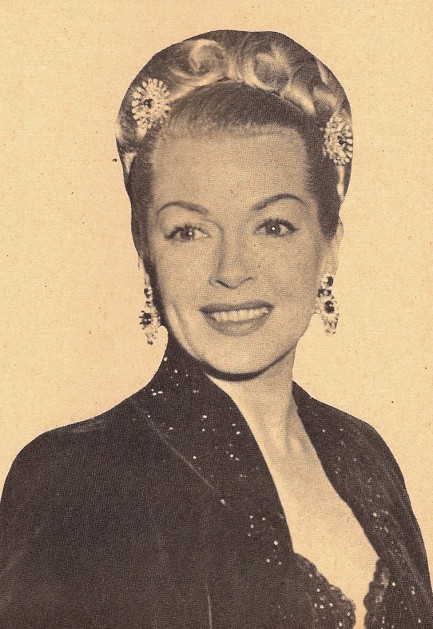 We like that passage, because nearly all the stories about Payton declare, or at least suggest, that everything that happened after Hollywood stardom was part of a terminal plummet. That’s pretty much the default setting in American journalism—anything other than wealth and fame is by definition failure. It’s an idiotic conceit, even a harmful one, and Payton reveals that in Mexico she landed someplace solid and safe, and got along fine without money or recognition. Two years of happiness is nothing to take lightly. But she just couldn’t sit still—not because of where she was, but because of who she was. We like that passage, because nearly all the stories about Payton declare, or at least suggest, that everything that happened after Hollywood stardom was part of a terminal plummet. That’s pretty much the default setting in American journalism—anything other than wealth and fame is by definition failure. It’s an idiotic conceit, even a harmful one, and Payton reveals that in Mexico she landed someplace solid and safe, and got along fine without money or recognition. Two years of happiness is nothing to take lightly. But she just couldn’t sit still—not because of where she was, but because of who she was. And the spiral continued—cheaper and cheaper forms of prostitution, physical confrontations that resulted in her getting some of her teeth knocked out, and more. In all of these tales there’s a recurrent theme of lowly types taking advantage of her, but we can’t help noting that she was paid a mere $1,000 for her autobiography, an absurdly deficient amount for a former top star with a crazy story to tell, which suggests to us that guys in office suites take as much advantage—or more—of a person’s hard luck as guys in alleys. We have some scans below, and Payton will undoubtedly appear here again.
 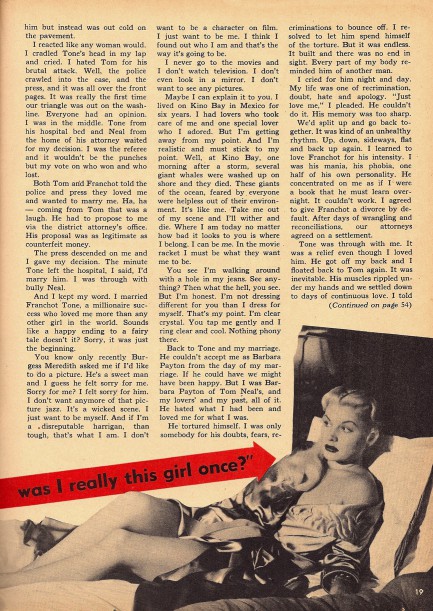 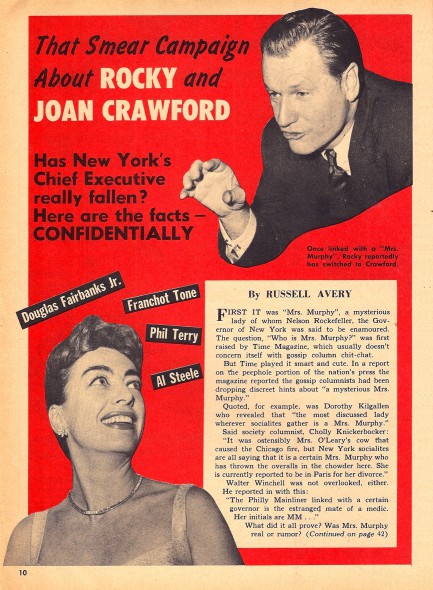 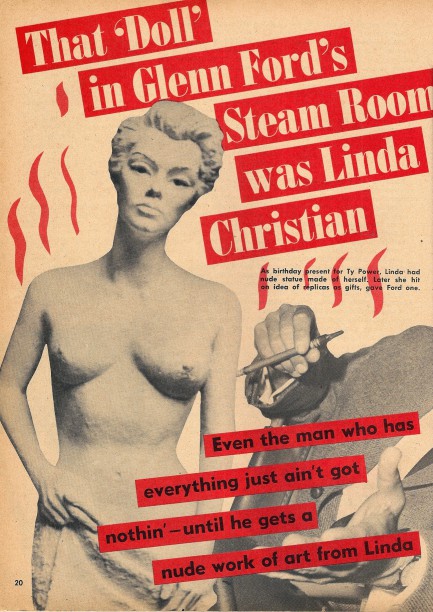 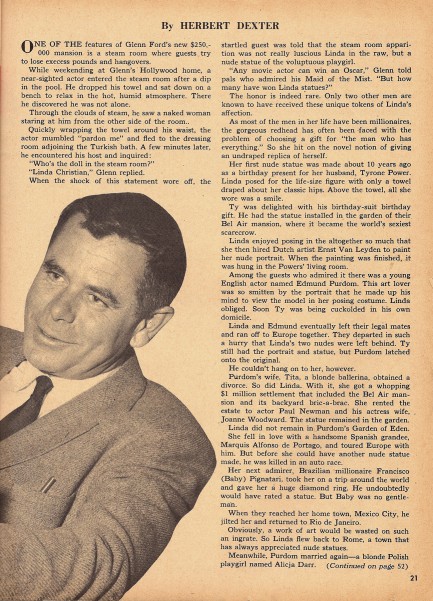 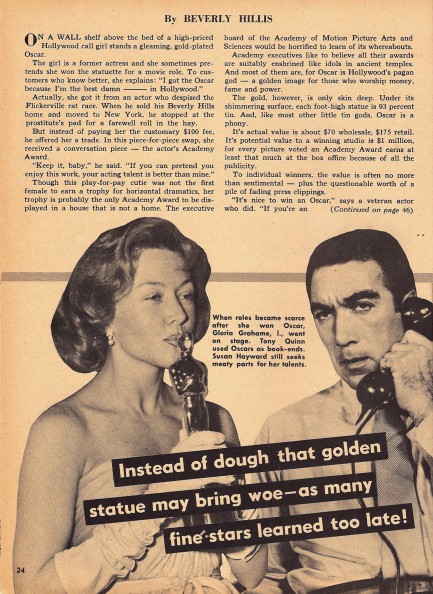 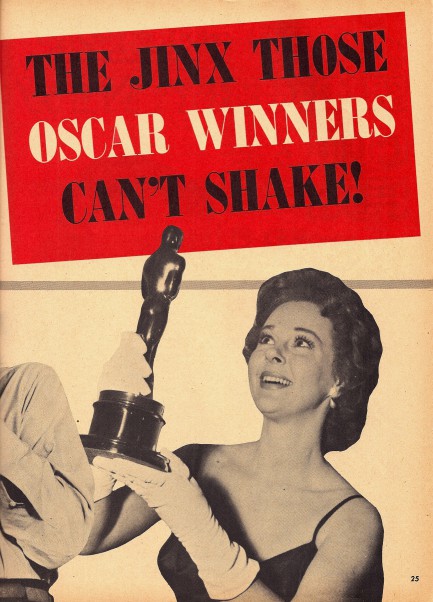 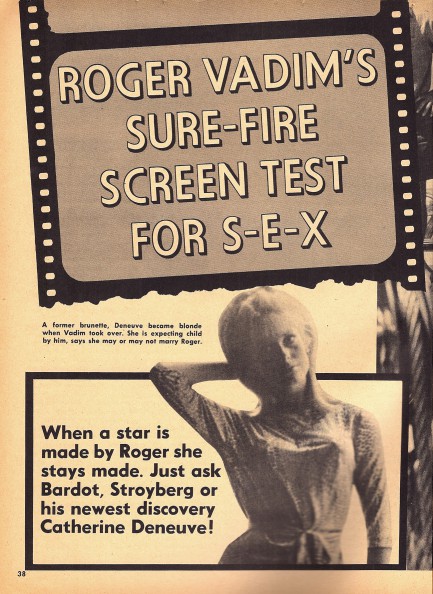 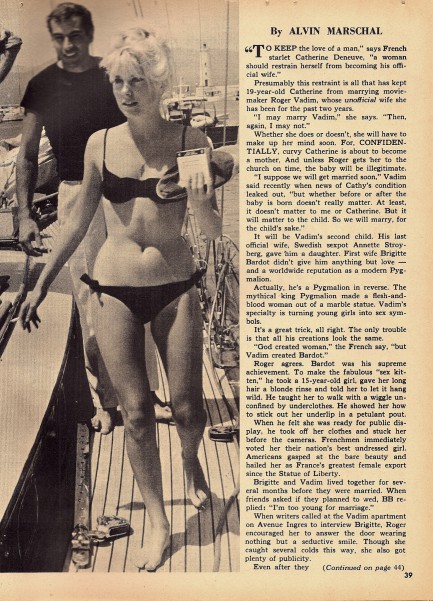 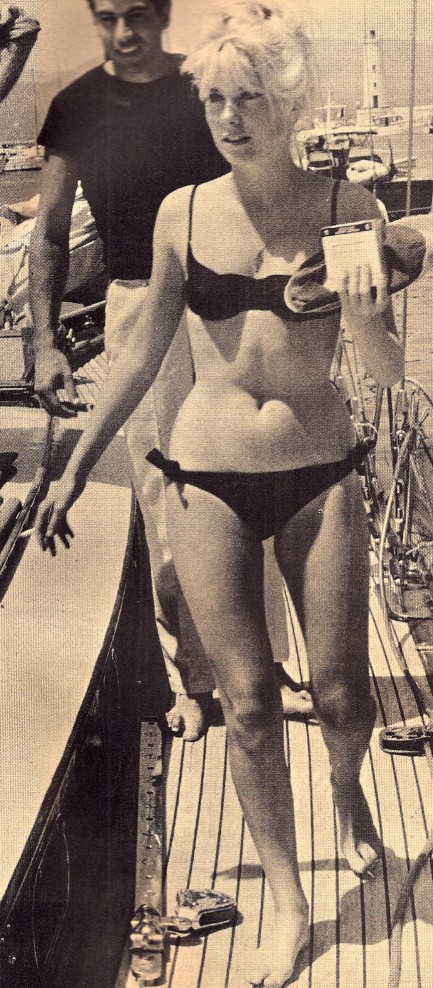 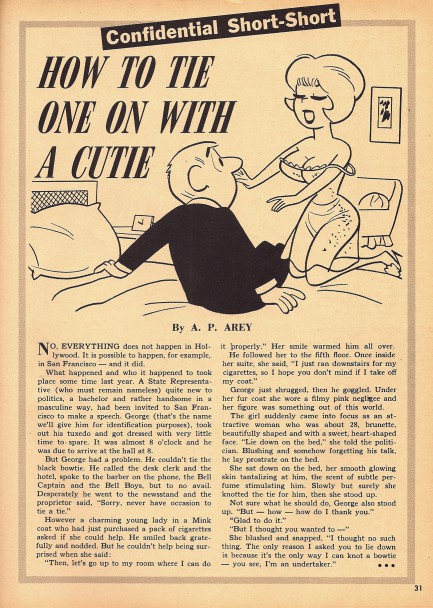
 What am I wearing? Well, baby, let’s just hope one day they invent a phone with a camera in it. 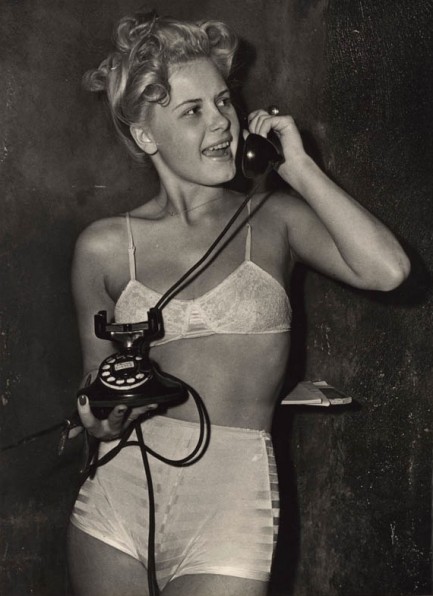
Above is a great shot of American actress Jean Wallace, who debuted in the 1941 musical Ziegfeld Girl, co-starred with husband Franchot Tone in the 1949 film noir Jigsaw, and appeared in about twenty other movies. This image, which, considering the time period is quite racy for a mainstream actress, is from 1948 or 1949.
 It's sink or swim on the blue bayou. 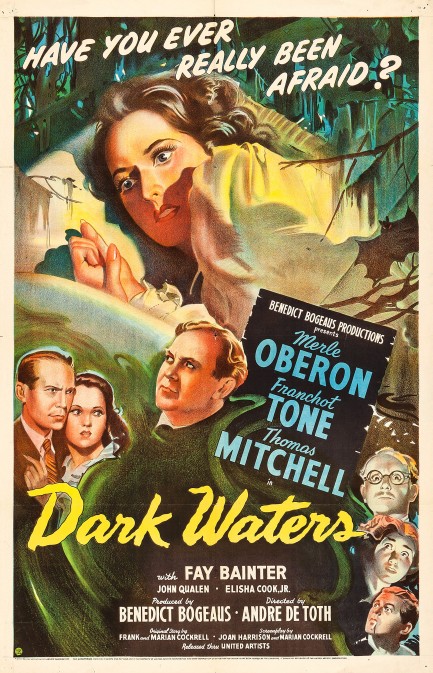
Dark Waters, which premiered in the U.S. today in 1944, is an interesting movie that hinges on PTSD. They didn't call it that back when the film was made, but what would you call it when someone can't put a traumatic experience behind them, is nervous, prone to panic attacks, and is socially debilitated? The sufferer is Merle Oberon and her trauma is the terrifying experience of being on a boat that was torpedoed by a German submarine. She lost her mother and father in the attack, and barely survived a subsequent ordeal on the water. Take this understandably jittery person with an untreated disorder, stick her in a mansion on the creepy-ass Louisiana bayou, then have someone or someones try to drive her insane. Who's doing the scaring? Well, that's the entire plot, and you'll have to find out for yourself.
We don't think this is a top flick, but it has a pretty cool south Louisiana feel, which is worth something. There's even a fais do-do—a Cajun dance party. It also has Elisha Cook, Jr. as a hopeless suitor and Nina Mae McKinney as a maid, which is way too minimal a role for her, but that's the way it went for women of color in 1944. Dark Waters is fine for fans of gothic creepshows, but film noir fans should temper expectations. The movie is labeled a film noir on some crowdsourced websites like IMDB and Wikipedia, but it isn't really. It has a nice a nighttime swamp climax, but one set piece does not a film noir make. It's more of a gothic thriller on the order of Rebecca. Noir fans take note. Everyone else, enjoy.
|
 |

The headlines that mattered yesteryear.
1933—The Gestapo Is Formed
The Geheime Staatspolizei, aka Gestapo, the official secret police force of Nazi Germany, is established. It begins under the administration of SS leader Heinrich Himmler in his position as Chief of German Police, but by 1939 is administered by the Reichssicherheitshauptamt, or Reich Main Security Office, and is a feared entity in every corner of Germany and beyond. 1937—Guernica Is Bombed
In Spain during the Spanish Civil War, the Basque town of Guernica is bombed by the German Luftwaffe, resulting in widespread destruction and casualties. The Basque government reports 1,654 people killed, while later research suggests far fewer deaths, but regardless, Guernica is viewed as an example of terror bombing and other countries learn that Nazi Germany is committed to that tactic. The bombing also becomes inspiration for Pablo Picasso, resulting in a protest painting that is not only his most famous work, but one the most important pieces of art ever produced. 1939—Batman Debuts
In Detective Comics #27, DC Comics publishes its second major superhero, Batman, who becomes one of the most popular comic book characters of all time, and then a popular camp television series starring Adam West, and lastly a multi-million dollar movie franchise starring Michael Keaton, then George Clooney, and finally Christian Bale. 1953—Crick and Watson Publish DNA Results
British scientists James D Watson and Francis Crick publish an article detailing their discovery of the existence and structure of deoxyribonucleic acid, or DNA, in Nature magazine. Their findings answer one of the oldest and most fundamental questions of biology, that of how living things reproduce themselves. 1967—First Space Program Casualty Occurs
Soviet cosmonaut Vladimir Komarov dies in Soyuz 1 when, during re-entry into Earth's atmosphere after more than ten successful orbits, the capsule's main parachute fails to deploy properly, and the backup chute becomes entangled in the first. The capsule's descent is slowed, but it still hits the ground at about 90 mph, at which point it bursts into flames. Komarov is the first human to die during a space mission.
|

|
|

It's easy. We have an uploader that makes it a snap. Use it to submit your art, text, header, and subhead. Your post can be funny, serious, or anything in between, as long as it's vintage pulp. You'll get a byline and experience the fleeting pride of free authorship. We'll edit your post for typos, but the rest is up to you. Click here to give us your best shot.

|
|















 Show business careers go off the rails for a wide array of reasons—lack of talent, lack of audience appeal, substance abuse, and a predilection for general mayhem all come to mind. Hollywood actor Tom Neal fits legendarily into the last category. From his debut in 1938 through 1951 he logged more than seventy film appearances. That's incredible output by any measure. Most of his roles were in b-movies, but there were some notable parts mixed in. His career highlights included Another Thin Man, the film noir Detour, and Crime, Inc.
Show business careers go off the rails for a wide array of reasons—lack of talent, lack of audience appeal, substance abuse, and a predilection for general mayhem all come to mind. Hollywood actor Tom Neal fits legendarily into the last category. From his debut in 1938 through 1951 he logged more than seventy film appearances. That's incredible output by any measure. Most of his roles were in b-movies, but there were some notable parts mixed in. His career highlights included Another Thin Man, the film noir Detour, and Crime, Inc. record in the ring. Maybe Tone slipped on a dollop of Beluga caviar. Payton said Tone simply had no choice about fighting because Neal attacked him. Whatever the reason, Neal floored Tone with his first punch, and continued to beat him afterward, delivering cheek and nose fractures. Tone lay in an eighteen hour coma in the hospital. Ironically, that was the day Payton's divorce had come through.
record in the ring. Maybe Tone slipped on a dollop of Beluga caviar. Payton said Tone simply had no choice about fighting because Neal attacked him. Whatever the reason, Neal floored Tone with his first punch, and continued to beat him afterward, delivering cheek and nose fractures. Tone lay in an eighteen hour coma in the hospital. Ironically, that was the day Payton's divorce had come through.
 soon discovered that Payton—wait for it—had never stopped seeing Neal, including while Tone was in the hospital with a broken face. So there went that marriage. It seemed as if Neal had unequivocally won Payton's affections after all, and she does look happy in the 1952 photo above, but it's probably no surprise to learn that the two parted ways after a few tumultuous years, some broken windows, and at least one police intervention. Payton went on to have truly epic problems that would put a South American novela to shame.
soon discovered that Payton—wait for it—had never stopped seeing Neal, including while Tone was in the hospital with a broken face. So there went that marriage. It seemed as if Neal had unequivocally won Payton's affections after all, and she does look happy in the 1952 photo above, but it's probably no surprise to learn that the two parted ways after a few tumultuous years, some broken windows, and at least one police intervention. Payton went on to have truly epic problems that would put a South American novela to shame.
 slug entering her skull behind her right ear and ending up in a sofa cushion. Neal wasn't on the premises when police arrived, but was soon arrested, and claimed the shooting had been an accident, the result of a struggle over the gun after his wife pulled it on him.
slug entering her skull behind her right ear and ending up in a sofa cushion. Neal wasn't on the premises when police arrived, but was soon arrested, and claimed the shooting had been an accident, the result of a struggle over the gun after his wife pulled it on him.














 and we seem to be correct. Judge for yourself at right. At least her boob punishment was offset by the fact that her outfit was too flimsy to include one of the deadly corsets that sometimes made their way around stars' waists.
and we seem to be correct. Judge for yourself at right. At least her boob punishment was offset by the fact that her outfit was too flimsy to include one of the deadly corsets that sometimes made their way around stars' waists.





































 entitled "An Interlude Before Evening," and involved being helped from her clothing by her maid Sadie before slipping nude into a bathtub. But the nudity was an illusion, the cleverest part of her act, achieved through a combination of lighting, positioning, flesh-colored underwear, and sheer athleticism as she slipped quickly from behind a towel and into the sudsy tub.
entitled "An Interlude Before Evening," and involved being helped from her clothing by her maid Sadie before slipping nude into a bathtub. But the nudity was an illusion, the cleverest part of her act, achieved through a combination of lighting, positioning, flesh-colored underwear, and sheer athleticism as she slipped quickly from behind a towel and into the sudsy tub. The trial was scheduled for early December in the Beverly Hills Courthouse. Giesler kept the jury—which wasn’t all strippers, but at least was mostly female—laughing with his continual antics. He introduced St. Cyr’s rhinestone encrusted bra and g-string as people’s exhibits A and B. He drew diagrams on a blackboard illustrating how different observers' vantage points toward the stage were blocked by St. Cyr's maid. He flustered police officials by making them discuss in detail such such terms as “bump,” “grind,” and “half-bump,” and followed that up by putting Herman Hover on the witness stand and having him demonstrate those moves. The sight of the portly Hover attempting burlesque sent ripples of laughter through the courtroom. Years later Giesler wrote: “I can honestly say I succeeded in having her case laughed into a not-guilty verdict.”
The trial was scheduled for early December in the Beverly Hills Courthouse. Giesler kept the jury—which wasn’t all strippers, but at least was mostly female—laughing with his continual antics. He introduced St. Cyr’s rhinestone encrusted bra and g-string as people’s exhibits A and B. He drew diagrams on a blackboard illustrating how different observers' vantage points toward the stage were blocked by St. Cyr's maid. He flustered police officials by making them discuss in detail such such terms as “bump,” “grind,” and “half-bump,” and followed that up by putting Herman Hover on the witness stand and having him demonstrate those moves. The sight of the portly Hover attempting burlesque sent ripples of laughter through the courtroom. Years later Giesler wrote: “I can honestly say I succeeded in having her case laughed into a not-guilty verdict.” 
 see the outline of her “private parts,” which he discerned in enough detail to determine “were shaven.” The inconsistencies were epic. Some said she caressed herself, others weren’t sure. Another described her towel as “about twenty, twenty-four inches.” In reality it was three times that size. It was as if St. Cyr's dance had dumbfounded the cops.
see the outline of her “private parts,” which he discerned in enough detail to determine “were shaven.” The inconsistencies were epic. Some said she caressed herself, others weren’t sure. Another described her towel as “about twenty, twenty-four inches.” In reality it was three times that size. It was as if St. Cyr's dance had dumbfounded the cops.
 freed her to inhabit different characters. Despite her assertions that she always wore at least a g-string and bra, she definitely performed topless on occasion, as shown by the above photo taken at Ciro’s during early 1951.
freed her to inhabit different characters. Despite her assertions that she always wore at least a g-string and bra, she definitely performed topless on occasion, as shown by the above photo taken at Ciro’s during early 1951.


 temperatures wherever I went. Today I have three long knife wounds on my solid frame. One extends from my buttocks down my thigh and needed I don’t remember how many stitches.” Payton’s anecdotes are cringe worthy, but they read like she’d gotten a grip on her life. No such luck. After four more long years of drugs, drink, and disaster she was found dead on her bathroom floor in 1967.
temperatures wherever I went. Today I have three long knife wounds on my solid frame. One extends from my buttocks down my thigh and needed I don’t remember how many stitches.” Payton’s anecdotes are cringe worthy, but they read like she’d gotten a grip on her life. No such luck. After four more long years of drugs, drink, and disaster she was found dead on her bathroom floor in 1967. We like that passage, because nearly all the stories about Payton declare, or at least suggest, that everything that happened after Hollywood stardom was part of a terminal plummet. That’s pretty much the default setting in American journalism—anything other than wealth and fame is by definition failure. It’s an idiotic conceit, even a harmful one, and Payton reveals that in Mexico she landed someplace solid and safe, and got along fine without money or recognition. Two years of happiness is nothing to take lightly. But she just couldn’t sit still—not because of where she was, but because of who she was.
We like that passage, because nearly all the stories about Payton declare, or at least suggest, that everything that happened after Hollywood stardom was part of a terminal plummet. That’s pretty much the default setting in American journalism—anything other than wealth and fame is by definition failure. It’s an idiotic conceit, even a harmful one, and Payton reveals that in Mexico she landed someplace solid and safe, and got along fine without money or recognition. Two years of happiness is nothing to take lightly. But she just couldn’t sit still—not because of where she was, but because of who she was.














